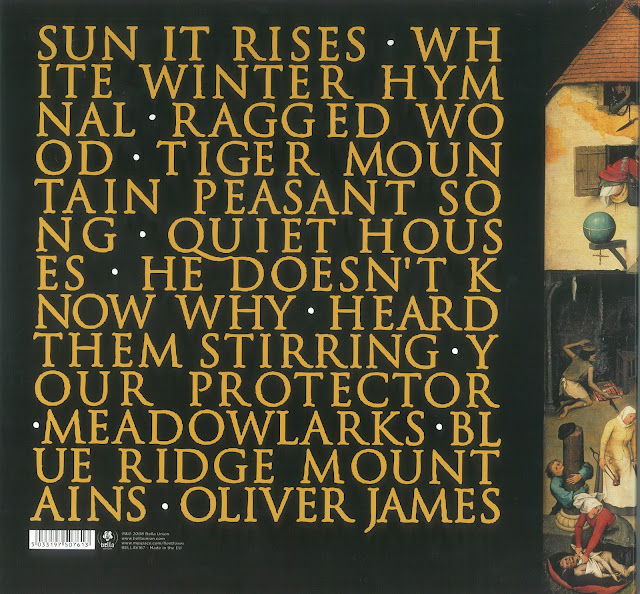Live at the Cellar Door is the latest in Neil Young’s Performance Series of archive concert releases. That it is numbered 2.5 in the series, chronologically following volume two (Live at the Fillmore East from March 1970) and preceding the third instalment (Live at Massey Hall 1971), suggests the tapes for this gig have surfaced since the original release schedule was drawn up. Or maybe it’s just Neil being Neil, cantankerous as ever. Indeed, much of the early talk around this release has focused on how chronologically close the performance is to the Massey Hall concert, which was recorded only one month later. There has therefore been some disgruntlement that this has been an opportunity missed to release something from another period, say the late ‘70s, which is as yet uncovered by the Performance Series. This of course will not stop people buying it, not least because those who already own Massey Hall will most likely be Neil devotees and they’ll want this too. And rightly so. This comes from arguably Young’s most fertile period, when he was so prolific he was playing songs live he would not get round to recording released versions of until years later, if at all. But with Massey Hall considered by many to be the last word on early 1970s solo Neil live, does Cellar Door have anything to add?
Cellar Door shares seven of its 13 tracks with Massey Hall. Where Massey Hall points towards Harvest, Cellar Door focuses on his third solo album, After the Gold Rush (released just three months before this gig), along with songs from his time with Buffalo Springfield. Interestingly, it ignores his first self-titled solo album altogether. This set feels more intimate than Massey Hall but also more tentative, reflecting perhaps the fact that these shows were considered a warm-up for a Carnegie Hall gig a few days later. Given the quality of the songwriting this isn’t really a criticism and the tracks come over as fresh and new born. There is also less of the rambling, albeit charming, between-song banter that peppered Massey Hall. The main exception is the introduction to ‘Flying On The Ground Is Wrong’ when Young gives a suitably stoned-sounding explanation that the song is about dope. If anything, the crowd is even more polite than Massey Hall, which only adds to the intimacy.
As with Massey Hall, Cellar Door mixes acoustic guitar tracks with songs demonstrating Young’s elegant and understated piano playing. In fact, it’s the piano songs that provide many of the highlights, such as a majestic ‘Expecting To Fly’. Most notable though is the rare, and beautiful, piano version of ‘Cinnamon Girl’, which given it is one of his early signature guitar songs, shouldn’t work but does (“That’s the first time I ever did that one on the piano” he notes at the end). It also features the first performances of ‘Old Man’ (the only track to appear from Harvest, which was still over a year away) and ‘See The Sky About To Rain’, which didn’t surface officially until On The Beach, four years later.
Given the man’s track record, Young fans are used to erratic release schedules and they should soon stop worrying about what could have been released. With Neil you never know what’s around the corner anyway. Whether Cellar Door is better or worse than Massey Hall is somewhat irrelevant – it’s just wonderful to have both. As one contributor to a discussion board on a Neil Young fan site says, “Repetition doesn’t matter, hearing the performances does.” We couldn’t agree more.
This review originally appeared for Muso's Guide in December 2013.
As a postscript, Neil Young News, a news blog from fan site Thrasher's Wheat, returned to the old Cellar Door venue to 'recreate' the gatefold photo used for the album. Read more here.



















